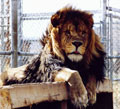Recent discussions, both on this Forum and on other sites, have expressed a variety of opinions about “acceptable” leak rates. I have found it useful to clarify what the two major manufacturers actually say about their systems regarding leak. I find that I have made inaccurate statements about this issue, specifically in the area of machine specifications. The following is what the manufacturers do (and do not) state:
RESMED
ResMed literature makes a number of statements about leak. In their “Mask Fitting Feature”, leak rates up to 0.18 L/s are classified as “Excellent”, rates up to 0.26 L/s are classified as “Very good”, and rates up to 0.34 L/s are classified as “Good”. Three additional categories simply carry the instruction “Adjust mask”: 0.35 L/s or above, 0.42 L/s or above, and 0.50 L/s or above.
ResMed further states that “Generally, a leak rate of more than 0.4 L/s (24 L/min) is associated with patient discomfort, disturbed sleep, and reduced efficacy of treatment.” They do not, however, explicitly state that 0.4 L/s is a specification limit for their sensors, leak compensation, or algorithm function.
In fact, other statements about the 0.4 L/s level demonstrate a considerable tolerance for this level of leak: “If the leak exceeded 0.4 L/s (24 L/min) for more than 30% of the previous session, the following message will appear on the LCD: High leak in last session.” Note that this comment reflects acceptance of 0.4 L/s leak as a 70th centile value.
Finally, ResMed does make a specific statement about leak tolerance: “The Leak Alert feature, if enabled, will alert the patient when mask leak exceeds 0.7 L/s (42 L/min) for more than 20 seconds. When the leak exceeds this level, the autotitrating algorithm ceases to perform optimally.” Note that the adjective used is “optimally”.
Thus, while it can be said that ResMed “recommends” leak below 0.34 L/s, and tolerates 70th centile leaks up to 0.40 L/s, they do not specifically express concerns about machine function until leak exceeds 0.7 L/s. All of these levels reflect net leak in excess of normal mask venting.
RESPIRONICS
Respironics literature, to the best of my knowledge, does not provide specific leak value cut-off levels. Their current online literature at
http://sleepapnea.respironics.com/techn ... ement.aspx
states that “The robust REMstar Auto algorithm tolerates a wide range of leak fluctuations. If the measured patient leak rate significantly increases above the expected leak for an extended period of time, the enhanced Encore report indicates this large leak by displaying a black bar.” The diagram accompanying this statement suggests that the trigger level is above “2x Expected Leak”. Neither “large leak”, “expected leak” nor “extended period of time” are defined.
Respironics offers a “Mask Alert” feature as does ResMed, but their literature does not indicate any specifications regarding this option: “Mask Leak Alert – This flashing text displays on the Active Display screen if the Mask Alert setting is enabled and the device detects an excessive mask leak.” Another reference to this feature states: “If this feature is enabled, then the [ ] symbol flashes on the Active display screen if a significant mask leak is detected, and an audible alert sounds.” The undefined adjectives “excessive” and “significant” appear to be used interchangeably.
I trust that this is helpful. Velbor
Leak: What the Manufacturers Say
Re: Leak: What the Manufacturers Say
I have been using my Optilife with a cradle cushion several times recently to help my nares heal from psoriasis on them. One night I felt I was fussing all night trying to keep the mask from leaking. When I got up in the morning and looks at my leak reate, it was .02????
The next night I readjusted the mask to be sure it didn't leak. I slept much better; but when I checked my numbers the next morning, my leak rate was .42. What gives?
I can't wait to get back to the love of my life, my Swift LT.
The next night I readjusted the mask to be sure it didn't leak. I slept much better; but when I checked my numbers the next morning, my leak rate was .42. What gives?
I can't wait to get back to the love of my life, my Swift LT.
- DreamStalker
- Posts: 7509
- Joined: Mon Aug 07, 2006 9:58 am
- Location: Nowhere & Everywhere At Once
Re: Leak: What the Manufacturers Say
Great info Velbor. Now I have an idea of what kind of leak stats are CPAP machines are designed for.
I would think that the stats are nonlinear with respect to machine pressure settings and that APAP use is likely more sensitive to leaks than CPAP mode. Just my own working hypothesis ... no data to support it though.
I would think that the stats are nonlinear with respect to machine pressure settings and that APAP use is likely more sensitive to leaks than CPAP mode. Just my own working hypothesis ... no data to support it though.
President-pretender, J. Biden, said "the DNC has built the largest voter fraud organization in US history". Too bad they didn’t build the smartest voter fraud organization and got caught.
- timbalionguy
- Posts: 888
- Joined: Mon Apr 27, 2009 8:31 pm
- Location: Reno, NV
Re: Leak: What the Manufacturers Say
A higher than normal leak rate associated with a good nights' sleep may indicate you had a ggod nights' sleep. I just had a night with the highest leak rate I have seen yet (12.5%, IntelliPAP) My AHI numbers were normal to a little high as well. These indicate that I slept much deeper than normal-- deep enough to not notice a mask leak. And I feel like I had a good nights' sleep. I also observe my AHI is higher on nights I sleep very well {indicating more apneia/hyponeia events the deeper I sleep), indicating I have a ways to go on finding my optimal titration.
Lions can and do snore....









